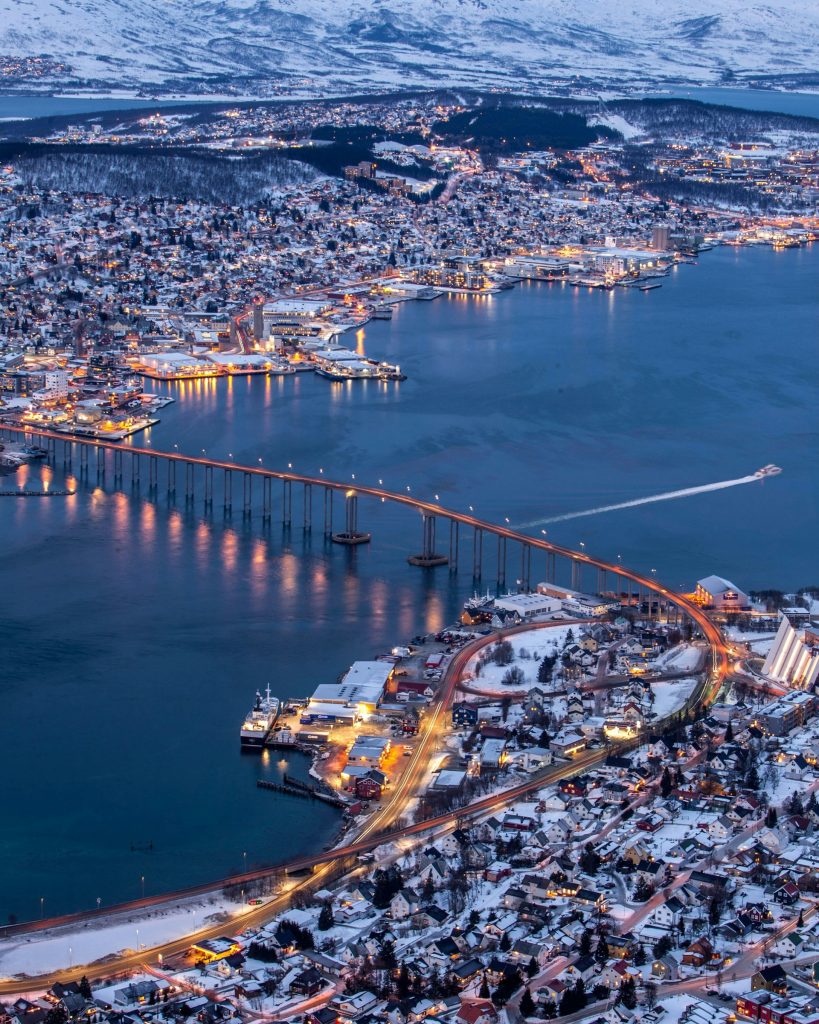Norway has a way of getting under your skin. Maybe it is the fjords and quiet forests, or the social trust that lets kids nap outside in prams. If you are a US citizen thinking about making the leap, you are not alone. Plenty of Americans settle here to work, study, or join family, and with some preparation the process is very doable. I grew up here and have helped more than a few newcomers find their footing, from the first visa question to buying their first winter boots.
Here is the short version: most Americans move to Norway on a skilled worker permit, a family immigration permit, or a student permit. You generally need a job offer first to apply as a worker. After arriving, you will register with the police, get your national ID number, and set up the basics like banking and healthcare access. Costs are higher than in most US cities, but salaries and social benefits help balance the equation if you plan and budget well. Let’s take a deeper dive into how it actually works, step by step.

The Main Ways Americans Move to Norway
For US citizens, the visa landscape is structured but straightforward once you pick the right path. The most common routes are:
Skilled worker with a job offer. This is the workhorse option for engineers, IT specialists, healthcare professionals, researchers, and experienced tradespeople. Employers often handle parts of the process and expect you to start within a few months of approval.
Family immigration. If your spouse, partner, or parent is Norwegian or already legally living here, family immigration can be the cleanest path. You will need to document the relationship and that your sponsor meets certain income requirements.
Student permit. Many Americans come for a master’s degree in English. Admissions plus proof of funds gets you to the starting line. You study first and may seek work experience after you graduate.
There are more niche options, like researchers on specific grants or athletes and artists with contracts, but those three cover most real cases.
How the Skilled Worker Route Really Works
If you are coming to work, your first priority is the job offer. Norway does not have a broad “move first, job hunt later” permit for non-EU citizens. Employers hire year-round, but spring and late summer are lively seasons. Most recruitment is done in English in sectors like tech, academia, engineering, and energy. Healthcare also recruits internationally, though language requirements are stricter.
Once you have a written offer, your employer might apply on your behalf or you apply yourself. You will submit your degree transcripts, proof of relevant experience, and details of the position and salary. Be ready to show that your education and job match. It helps to have transcripts and any required licenses professionally translated if they are not already in English.
A tip from experience: Norwegian salary discussions are candid but restrained. If an offer seems low for the role or location, ask for the salary scale or “lønnstrinn” for context. It is normal to have a short trial clause in the contract. Also check if your employer offers a pension beyond the statutory minimum, as many do.
Family Immigration: What You Should Expect
For spouses and partners, the key pieces are proof of relationship and the sponsor’s income. Norway expects your partner to support the household at a certain level. Make sure the income requirement is met in the correct year and with the correct documentation, not just verbally. If you married recently, gather joint bills, leases, or travel history to show continuity. For children, expect to provide birth certificates with apostilles and, when relevant, consent from the other parent for relocation.
Plan your timeline around in-person appointments after arrival. These book up quickly in bigger cities. If you can, pick an appointment slot before you land so you are not sitting on your hands waiting to register.
Studying in Norway as a Launchpad
Norway has robust, English-taught master’s programs, especially in energy, environment, data science, and design. The application timeline runs months ahead of the August start. You will prove admission and show you can cover living costs for a year. Part-time work is allowed with a student permit, which helps with both money and language immersion. If your long game is to stay, aim for internships and industry projects during your studies. It is common to roll a master’s thesis collaboration into a full-time offer.
What It Actually Costs To Get Settled
Norway is not cheap, so make a realistic runway:
Housing. In Oslo, Bergen, and Stavanger, expect city-rent prices comparable to major US metros. A one-bedroom apartment in an inner Oslo neighborhood often lands in the mid to upper range for US cities. Smaller cities like Trondheim and Tromsø are usually less.
Daily expenses. Groceries are structured differently. Chains like Kiwi and Rema 1000 have good value. Eating out adds up fast. Many newcomers cook most meals and save restaurants for weekends.
Upfront costs. Budget for deposits, application fees, translations, health insurance proofs where needed, and winter gear. A down jacket and waterproof shoes are not luxuries; they are how you stay comfortable and social in a Norwegian winter.
Norwegians love to buy and sell used goods. Check secondhand marketplaces for furniture and sports gear. You will find nearly-new skis for a fraction of retail.
Picking a Place To Live
Lifestyle matters as much as salary. Here is a quick feel for a few popular bases:
Oslo. International, diverse work opportunities, buzzing food scene, coastline and forests in easy reach. Fastest for careers in tech, consulting, media, and startups.
Bergen. Gateway to the west coast and fjords. Big on energy, shipping, aquaculture, and culture. Wetter than you think, but locals lean in and keep hiking.
Stavanger and Sandnes. Petroleum capital with a growing renewables scene. Family friendly with easy access to beaches and mountains.
Trondheim. Academic and engineering hub. Strong cycling culture and compact city feel.
Tromsø. Arctic university town with northern lights and long summer days. Smaller market, but a magical place if you like wild nature at your doorstep.

The Registration Choreography After You Arrive
Once you land with the right permit, there is a practical dance to do:
Book the police appointment early. This is where your residence card is finalized. Big-city slots go fast.
Get your national ID number. First a temporary D-number, then a permanent fødselsnummer if you settle long-term. The ID is the key that unlocks banking, tax, and healthcare.
Open a bank account. Banks require ID, address proof, and sometimes an in-branch meeting. Do not be surprised if this takes a couple of weeks.
Enroll with a fastlege. That is your local GP. You can switch later, but pick one quickly so you are in the system.
Set up Vipps. Vipps is the mobile payment app everyone uses. It will simplify your life, from flea markets to football club dues.
Healthcare, Parental Leave, and the Social Safety Net
Healthcare here is not free, but it is heavily subsidized. You pay small co-pays up to an annual cap, after which most is covered. Specialists require GP referrals. Prescription prices are reasonable. If you have children, parental leave is generous by US standards. Even if you never use every benefit, knowing they exist lowers the general stress level of life.
Driving, Public Transport, and Everyday Mobility
If you already drive, check the rules for exchanging a US license for a Norwegian one. In many cases there is a window to convert with minimal fuss if you do it promptly. Otherwise you will do theory and practical tests. That said, public transport is reliable and clean. In cities, many people skip owning a car and use trains, trams, and car share for the odd IKEA trip.
Language: How Much Norwegian Do You Need?
You can live in English in big cities and in many workplaces, but Norwegian unlocks the smaller jokes, neighborhood friendships, and more job options. Aim for daily study, even 20 minutes. Watch NRK news with subtitles. Do the shopping list in Norwegian. Join a local sports club or volunteer group; that is where language hardens from classroom to real life. Norwegians will switch to English to be kind, so tell them, “Kan vi ta det på norsk?” and they will play along.
Finding a Job From the US
If you are job hunting before you move, tailor your CV to Norwegian norms: concise, skills-forward, with clean formatting. Cover letters are short and practical. Referees matter here; list a couple who will actually pick up the phone. Networking is quieter than in the US, but effective. Join relevant Slack groups, professional associations, and LinkedIn communities in Norway. If you do a video interview in winter, daylight hours are short; keep time zones in mind and show you have thought about the climate and lifestyle, not just the role.
Bringing Kids, Pets, and a Life
Families integrate well here. Schools are academically solid and childhood is protected time. Expect outdoor play in all weather and a culture that values independence. For pets, check vaccination and entry rules well in advance. Rental listings often say whether pets are allowed; many landlords are flexible if you present references and a plan.
Socially, Norwegians can be reserved at first. Do not mistake quiet for cold. You make friends by doing, not by chatting. Join a hiking group, take a language class, help at a dugnad community clean-up. Show up twice, and you are in.
Taxes and Cost-of-Living Reality Check
Yes, taxes are higher than in the US. In return, you get infrastructure you actually use: good schools, public healthcare access, public transit, well-maintained ski trails, libraries that lend everything from tools to guitars. Salary packages usually list a gross number; your effective take-home reflects tax and pension contributions. Ask HR for a sample payslip so you know what your first net salary will look like. Plan a 3 to 4 month cash buffer to absorb deposits and setup costs.
Timelines and What “Permanent” Looks Like
Many permits can be renewed and count toward permanent residence if you maintain continuous legal stay and meet language and income requirements. Keep every piece of paperwork. If you change jobs, check that your new role still fits your permit type before you sign. Over a few years, you will collect what you need for the longer-term options.
Common Pitfalls To Avoid
Waiting to book appointments until after arrival. Do it early.
Assuming US credit history transfers. It does not. Build Norwegian history with your bank.
Ignoring weather. Invest in waterproof outer layers and you will say yes to more invitations.
Underestimating admin time. Banks, ID, and cards can take weeks. Start each step the day you can.
A Simple Game Plan You Can Follow
Pick your path: job, family, or study. Gather documents and scan everything clearly. Apply as early as you can and line up your police appointment. Budget for three months of expenses and set realistic expectations for housing. Start Norwegian now, even five minutes a day. When you land, register fast, get your GP, open the bank account, and plug into local life through a club or class. Norway moves at a steady, humane pace. If you match it, you will find your groove.
If you are serious about it, you can absolutely do this. And if you ever doubt yourself halfway through the forms, take a break, walk by the water, and remember why you are coming. The mountains will still be there when you arrive.